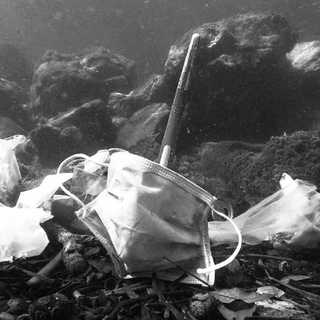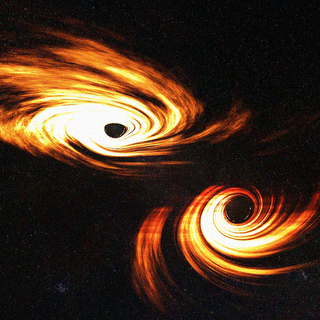Our search for water, one of the most elementary building blocks of life in the universe, may have just arrived at an astonishing milestone. According to a new analysis of ancient galaxies, water existed in the universe just 780 million years after the Big Bang — which, in the universe’s timeline, is just 5% of its current age. The first stars and galaxies were just being born during this time.
What makes the discovery significant is that water is a molecule, a compound made up of different elements. This came into being at a time when some of the heavier elements of the universe were still relatively scarce, according to the research, published in The Astrophysical Journal.
Astronomers were able to obtain this insight because they were looking at a pair of massive galaxies whose light — beginning its journey 12.88 billion years ago — has just reached us. In other words, scientists were able to peer into the past to find that a life-forming entity existed far, far before Earth even existed.
The galaxies in question are merging into a bigger one, called SPT0311-58. This makes it the most massive, and among the oldest galaxies in the universe. This makes the research the most detailed study of the molecular gas content of the early universe, and the most distant detection of H2O in a star-forming galaxy.
“[W]e detected both water and carbon monoxide molecules in the larger of the two galaxies… Oxygen and carbon, in particular, are first-generation elements, and in the molecular forms of carbon monoxide and water, they are critical to life as we know it,” said astronomer Sreevani Jarugula from the University of Illinois.
Related on The Swaddle:
Astronomers Map More Than 100,000 ‘Star Nurseries’ To Show Where Stars Are Born
How scientists discovered the water is fascinating. A high-resolution, sensitive telescope called ALMA (Atacama Large Millimeter/submillimeter Array) picked up emissions from water molecules, generated when infrared light from interstellar dust excited the molecules.
Moreover, it also helps understand how the life-giving elements impacted the universe’s development itself, according to Jarugula. More specifically, understanding the composition of the early molecular clouds can help us learn how, and how many, stars were forming in the early universe.
“This study not only provides answers about where, and how far away, water can exist in the Universe but also has given rise to a big question: How has so much gas and dust assembled to form stars and galaxies so early in the Universe?” Jarugula adds.
“These molecules, important to life on Earth, are forming as soon as they can, and their observation is giving us insight into the fundamental processes of a Universe very much different from today’s,” said Joe Pesce, astrophysicist and ALMA Program Director at the National Science Foundation.
Water is the third most abundant molecule in the universe after hydrogen and carbon monoxide. But what makes the finding special is that observing water at such an early stage of the universe’s history helps us understand the evolution of the building blocks of life and, therefore, the story of us.




